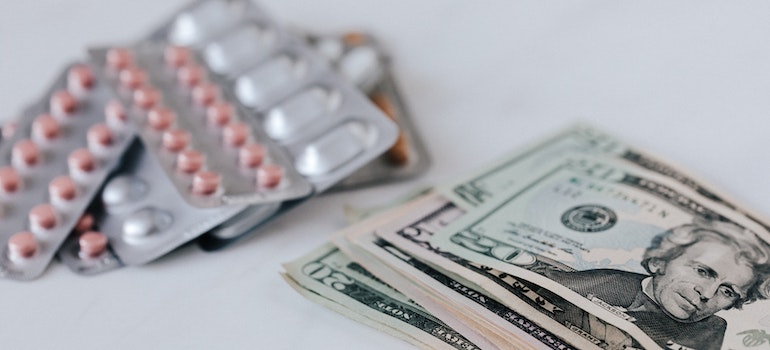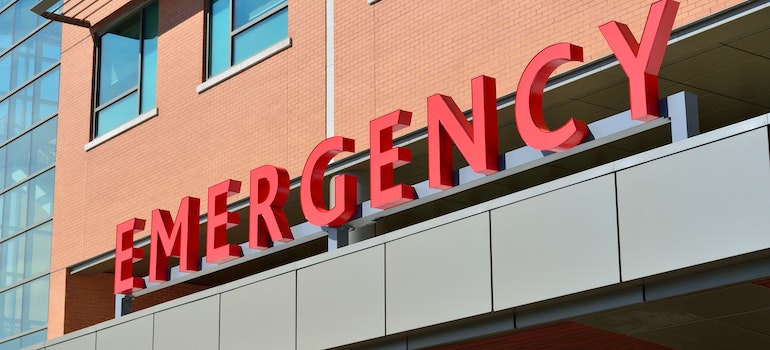How Much Does Florida’s Drug Abuse Cost the State Annually?
Get Help Now
The issue of drug abuse casts a long, dark shadow on our society, wreaking havoc on public health, societal well-being, and economic stability. That is a universal crisis, but some states bear more brunt than others. Unfortunately, Florida, known for its sun and sandy beaches, is not exempt from this struggle. The question then arises: What exactly does Florida’s drug abuse cost the state annually? Beyond the incalculable human toll, the financial implications of this rampant issue are immense and often overshadowed. Understanding these costs is critical in crafting effective policies and intervention strategies to combat the crisis.
Key players such as our Archstone Behavioral Health Florida, while tirelessly striving to provide necessary care and support, face an ongoing uphill battle against the overwhelming financial strain. The strain on such organizations and the wider economic toll on the state’s resources emphasize the situation’s urgency. This piece will delve into the various costs associated with drug abuse in Florida, highlighting the hidden financial burden of this pervasive issue. By shining a light on these costs, we hope to inspire a deeper conversation and a call to action to address this crisis more robustly, fostering a healthier future for the Sunshine State.
The Prevalence of Drug Abuse in Florida
With an understanding of the pressing nature of Florida’s drug abuse issue established, it’s crucial to delve into the prevalence of drug abuse in the state. These numbers tell a story that weaves through Florida’s residents’ lives and touches the heart of communities.
The Most Commonly Abused Substances
Like many other states, Florida is grappling with various substance abuse issues. Alcohol, opioids, and methamphetamine are particularly prevalent. An unfortunate testament to this is the increasing demand for alcohol detox in Florida, reflecting a significant portion of the population struggling with alcohol dependence.
In addition to alcohol, opioid abuse, particularly prescription opioids and synthetic opioids like fentanyl, has caused significant distress. Similarly, methamphetamine abuse continues to be a persistent issue, causing a rise in emergency room visits and subsequent healthcare costs.

The Data on Drug Abuse
It’s essential to consider the scale of the problem to grasp Florida’s drug abuse cost to the state annually. According to the Substance Abuse and Mental Health Services Administration (SAMHSA), nearly one million Floridians reported using illicit drugs in a recent year. This number is not a standalone figure but rather a representation of the significant population affected by drug abuse and the consequent ripple effects on the state’s economy.
Direct Costs: How Florida’s Drug Abuse Impacts the State’s Budget Annually
As we navigate deeper into the realm of Florida’s drug abuse, we shift our focus onto the direct costs. These costs, for instance, $10.1 billion in 2017, represent the most tangible monetary implications of drug abuse on the state’s budget. Playing a significant role in calculating Florida’s drug abuse cost to the state annually, these costs exert immense pressure on the state’s financial resources, often stretching them thin.
Law Enforcement, Judicial System, and Incarceration Costs: The Price of Justice
The legal implications of drug abuse translate into considerable expenses. For instance, In 2013, the economic burden on the criminal justice system resulting from substance abuse and addiction amounted to $1.8 billion. Law enforcement agencies are continuously involved in activities related to drug abuse, such as responding to drug-related incidents, conducting investigations, and executing arrests. This extensive engagement necessitates substantial financial resources, contributing to the direct costs.
Further, judicial systems and courts deal with the consequent legal proceedings. They oversee trials and adjudication processes, which also require significant financial outlay. Finally, the state bears the financial burden of incarceration for individuals convicted of drug-related offenses. The expenses associated with incarceration—from basic sustenance and healthcare to administrative and operational costs—also contribute heavily to the direct costs.

State-Funded Treatment and Rehabilitation Programs: The Investment in Recovery
Concurrent with the legal costs, the Florida state budget is significantly impacted by the funds allocated for treatment and rehabilitation services. One of the key aspects of these services is Florida drug detox, a crucial step in combating drug abuse.
Detoxification represents the first step toward recovery. It involves a medical intervention to manage the severe physical symptoms of withdrawal and to purge the body of toxic substances. When such procedures are conducted in state-funded facilities, the expenses associated with personnel, medication, and operational costs contribute to the direct costs.
In addition to basic drug detox, the state funds comprehensive treatment programs, often including medical detox in Florida. Unlike regular detox, medical detox incorporates specific medications to manage withdrawal symptoms. That makes the process safer and more comfortable for individuals with severe substance abuse issues. While providing such advanced treatments is essential for recovery, they also represent a significant portion of Florida’s drug abuse cost to the state annually.
These legal and treatment-related direct costs demonstrate the extensive financial implications of drug abuse on Florida’s budget, highlighting the urgency of effective interventions.
Indirect Costs: The Hidden Burden of Drug Abuse
Direct costs certainly offer a tangible perspective in assessing the full extent of Florida’s drug abuse cost to the state annually. It is estimated that the indirect costs of drug abuse and addiction ended up costing the Florida state $7.6 billion in 2017. However, they only represent the tip of the iceberg. Below the surface, indirect costs, though less immediately visible, play a crucial role in the economic narrative. These hidden costs encapsulate the ripple effects of drug abuse that may not directly burden the state’s budget but induce significant financial strain over time.
Lost Productivity: The Economic Consequence
One of the major indirect costs of drug abuse manifests in lost productivity. Employees grappling with drug addiction may suffer from frequent absences, decreased performance, and even job termination. These factors result in lost wages and lower overall economic output. According to National Institute on Drug Abuse estimates, lost work productivity due to substance abuse costs the U.S. economy over $130 billion annually. Florida, unfortunately, bears a significant portion of this burden (around $2.7 billion), directly affecting its economic stability and growth.

The Healthcare System Overload
Another significant portion of the hidden costs comes from the additional strain on the healthcare system. For instance, in 2013, it was approximated that the medical expenses linked to drug abuse and dependency reached $4.4 billion. Emergency room visits due to drug overdoses or related complications significantly increase the demand for healthcare services. Services such as those provided by an opiate detox center Florida are in constant demand, highlighting the stress on the healthcare infrastructure. Further, long-term health complications from drug abuse necessitate prolonged and intensive medical care, thus adding to the indirect costs.
Educational Challenges: The Future Costs
Finally, the educational implications of drug abuse also contribute to the indirect costs. Young individuals struggling with substance abuse often face academic difficulties, leading to increased dropout rates and decreased opportunities for higher education. This educational setback not only affects the individual’s potential but also represents an economic burden as it hampers the growth and productivity of the future workforce.
In sum, these indirect costs cannot be overlooked to gain a more comprehensive picture of Florida’s drug abuse cost to the state annually. Though hidden beneath the surface, they form a substantial part of the overall economic stress caused by drug abuse. Recognizing and understanding these costs can help formulate more holistic, effective, and economically beneficial approaches to this pervasive issue.

Social Costs: The Ripple Effect of Florida’s Drug Abuse
We’ve assessed the direct and indirect financial costs. However, the comprehensive picture of Florida’s annual drug abuse cost to the state is incomplete without considering the social costs. These costs aren’t strictly monetary but significantly impact the fabric of the community, affecting the state’s health, safety, and overall societal wellbeing.
The Strain on Family and Child Services
Drug abuse doesn’t exist in a vacuum. It directly impacts families, resulting in increased demand for child welfare services. Children battling drug addiction need additional support, such as counseling or special educational services. In severe cases, they may require foster care placement. This rise in demand for protective services, driven significantly by drug abuse, constitutes a critical social cost for Florida.
A Closer Look at Mental Health Concerns
Beyond the immediate family, drug abuse often goes hand-in-hand with mental health issues. For instance, take the increasing demand for services like Benzo detox Florida. These services not only attend to the physical symptoms of withdrawal but also focus on managing and treating associated mental health conditions. The need for co-occurring disorder treatment – simultaneously addressing substance abuse and mental health issues – is rising. This increasing need adds strain to the state’s mental health resources, contributing to the overall social cost.
Public Safety: An Overlooked Aspect
Furthermore, drug abuse has significant implications for public safety. Increased drug-related crimes, incidents of violence, and accidents are common side effects of rampant drug abuse. This strains law enforcement and the judicial system and cultivates an environment of instability and fear within communities. Herein, resources like Xanax detox Florida play a critical role in mitigating the prevalence of drug abuse and its related safety concerns.
Analyzing social costs deepens our understanding of Florida’s drug abuse cost the state annually. It illuminates the profound and far-reaching effects of drug abuse on our communities. Recognizing these social costs is crucial as it helps develop comprehensive, effective interventions that aid individuals and contribute positively to the broader societal fabric.
Prevention and Treatment: The Long-Term Solution for Florida’s Drug Abuse
While analyzing the components of Florida’s drug abuse cost to the state annually, it’s paramount to discuss the role of prevention and treatment. Although requiring immediate financial outlay, these elements represent a proactive and sustainable approach toward mitigating the drug abuse crisis. This long-term strategy can significantly reduce the direct, indirect, and social costs over time, bringing about positive change.
Prevention Programs: The First Line of Defense
The journey towards a drug-free society starts with effective prevention programs. These initiatives focus on educating the public, especially the youth, about the dangers and repercussions of drug abuse. They can take various forms, including school-based curricula, community outreach programs, and widespread media campaigns.
Despite the initial investment required, these prevention initiatives can potentially curtail future costs associated with drug abuse. By reducing the initiation of drug use, these programs can decrease the future demand for treatment and other related services, thereby bringing down Florida’s drug abuse cost to the state annually in the long run.
Treatment Programs: Turning the Tide
Following prevention, treatment programs form the second crucial component of this holistic approach. Comprehensive treatment programs that offer detox services such as methadone detox Florida, which play a significant role in aiding individuals to overcome drug addiction and reclaim their lives.
Methadone detox, a widely recognized treatment for opioid addiction, manages withdrawal symptoms and suppresses drug cravings. That improves the likelihood of a successful recovery and reduces the potential for relapse.
What’s particularly noteworthy is the ripple effect of these treatment programs. Every individual who successfully recovers rebuilds their life and lessens the overall strain on the state’s resources. Consequently, these programs are a lifeline for individuals and a sound and beneficial investment for Florida.

Aftercare Services: Ensuring Continued Success
Beyond initial treatment, aftercare services form a pivotal part of the recovery journey. These services, such as continued counseling, vocational training, and support groups, ensure sustained recovery by offering the necessary support to individuals as they reintegrate into society. They also significantly contribute to lowering relapse rates.
Investing in these services is akin to securing a future where Florida’s drug abuse cost the state annually is significantly mitigated. It reaffirms the commitment to recovery, continued success, and societal reintegration of individuals who’ve battled drug abuse.
Prevention and treatment are the twin pillars in the battle against drug abuse. They represent long-term solutions that aid individuals and substantially alleviate the state’s financial and social burdens. Continued investment and emphasis on these aspects is the way forward for a healthier, safer Florida.
Conclusion: Addressing the Costs of Florida’s Drug Abuse
In conclusion, the impacts of Florida’s drug abuse on the state annually are extensive, permeating various sectors and impacting individuals, families, and communities. The financial, social, and human costs are significant, but understanding these costs provides us with a roadmap to tackle this issue effectively. From prevention to treatment and long-term recovery, a holistic approach is needed. If you have more questions or require assistance, please contact us. Together, we can work towards reducing the cost of drug abuse and fostering a healthier, safer Florida.